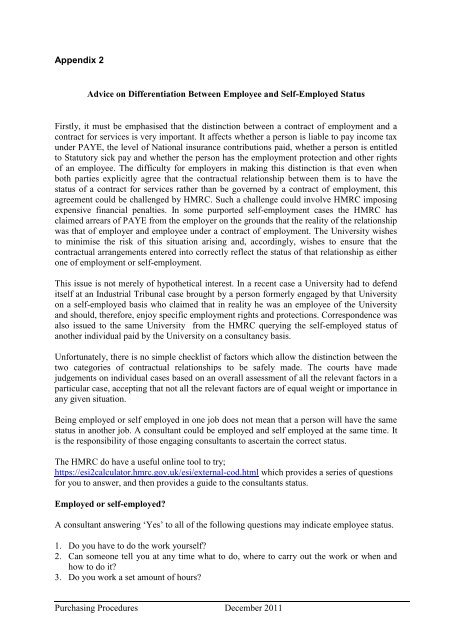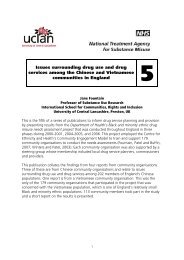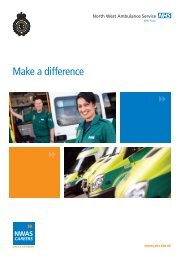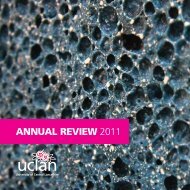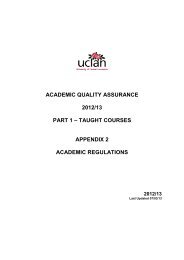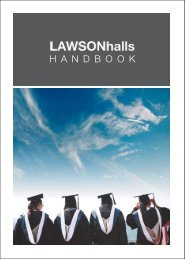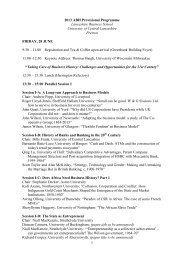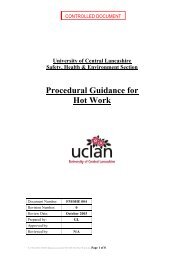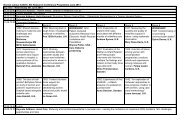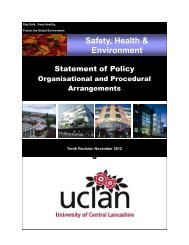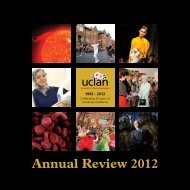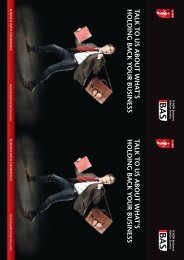PURCHASING PROCEDURES - University of Central Lancashire
PURCHASING PROCEDURES - University of Central Lancashire
PURCHASING PROCEDURES - University of Central Lancashire
You also want an ePaper? Increase the reach of your titles
YUMPU automatically turns print PDFs into web optimized ePapers that Google loves.
Appendix 2<br />
Advice on Differentiation Between Employee and Self-Employed Status<br />
Firstly, it must be emphasised that the distinction between a contract <strong>of</strong> employment and a<br />
contract for services is very important. It affects whether a person is liable to pay income tax<br />
under PAYE, the level <strong>of</strong> National insurance contributions paid, whether a person is entitled<br />
to Statutory sick pay and whether the person has the employment protection and other rights<br />
<strong>of</strong> an employee. The difficulty for employers in making this distinction is that even when<br />
both parties explicitly agree that the contractual relationship between them is to have the<br />
status <strong>of</strong> a contract for services rather than be governed by a contract <strong>of</strong> employment, this<br />
agreement could be challenged by HMRC. Such a challenge could involve HMRC imposing<br />
expensive financial penalties. In some purported self-employment cases the HMRC has<br />
claimed arrears <strong>of</strong> PAYE from the employer on the grounds that the reality <strong>of</strong> the relationship<br />
was that <strong>of</strong> employer and employee under a contract <strong>of</strong> employment. The <strong>University</strong> wishes<br />
to minimise the risk <strong>of</strong> this situation arising and, accordingly, wishes to ensure that the<br />
contractual arrangements entered into correctly reflect the status <strong>of</strong> that relationship as either<br />
one <strong>of</strong> employment or self-employment.<br />
This issue is not merely <strong>of</strong> hypothetical interest. In a recent case a <strong>University</strong> had to defend<br />
itself at an Industrial Tribunal case brought by a person formerly engaged by that <strong>University</strong><br />
on a self-employed basis who claimed that in reality he was an employee <strong>of</strong> the <strong>University</strong><br />
and should, therefore, enjoy specific employment rights and protections. Correspondence was<br />
also issued to the same <strong>University</strong> from the HMRC querying the self-employed status <strong>of</strong><br />
another individual paid by the <strong>University</strong> on a consultancy basis.<br />
Unfortunately, there is no simple checklist <strong>of</strong> factors which allow the distinction between the<br />
two categories <strong>of</strong> contractual relationships to be safely made. The courts have made<br />
judgements on individual cases based on an overall assessment <strong>of</strong> all the relevant factors in a<br />
particular case, accepting that not all the relevant factors are <strong>of</strong> equal weight or importance in<br />
any given situation.<br />
Being employed or self employed in one job does not mean that a person will have the same<br />
status in another job. A consultant could be employed and self employed at the same time. It<br />
is the responsibility <strong>of</strong> those engaging consultants to ascertain the correct status.<br />
The HMRC do have a useful online tool to try;<br />
https://esi2calculator.hmrc.gov.uk/esi/external-cod.html which provides a series <strong>of</strong> questions<br />
for you to answer, and then provides a guide to the consultants status.<br />
Employed or self-employed?<br />
A consultant answering „Yes‟ to all <strong>of</strong> the following questions may indicate employee status.<br />
1. Do you have to do the work yourself?<br />
2. Can someone tell you at any time what to do, where to carry out the work or when and<br />
how to do it?<br />
3. Do you work a set amount <strong>of</strong> hours?<br />
Purchasing Procedures December 2011


